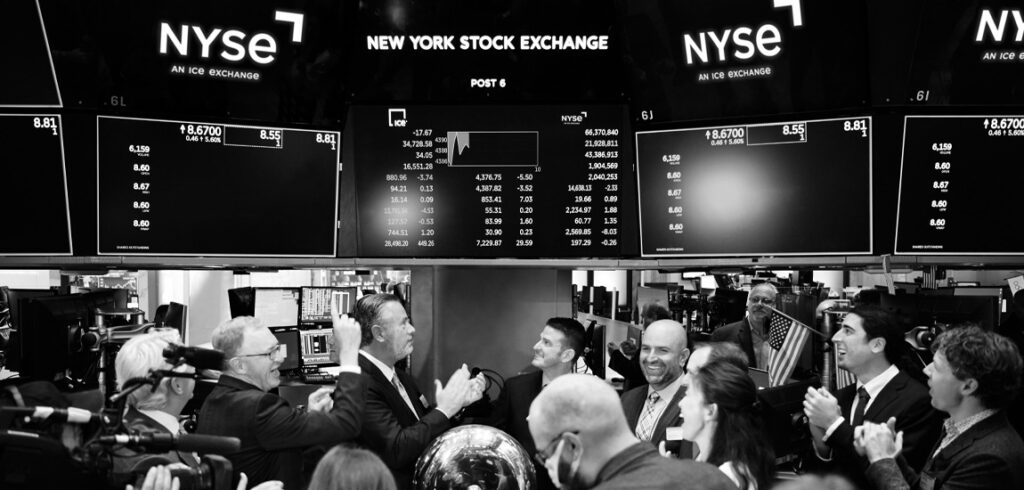This website and its content are not intended to provide professional or financial advice. The views expressed here are based solely on the writer’s opinion, research, and personal experience, and should not be taken as factual information. The author is not a financial advisor and lacks relevant certifications in that regard. We highly recommend consulting a qualified financial advisor before making any investment decisions, as the information presented on this site is general in nature and may not be tailored to individual needs or circumstances.

Brady Corporation (BRC) stock represents a company with deep-rooted history, founded in 1914 by William H. Brady in Eau Claire, Wisconsin. Initially a producer of advertising calendars, signs, and shop displays, BRC has transformed over the years, evolving its offerings to meet the changing demands of the market. Today, headquartered in Milwaukee, BRC stands as a global leader in safety identification, regulatory compliance, and related solutions. This article delves into the journey, stock performance, and investment prospects of BRC, offering readers insights into its past, present, and potential future in the stock market.
Contents
Brady Corporation Stock Key Features
- Brady Corporation issues stocks under the ticker BRC.
- BRC stock pays dividends.
- The stock is now listed on the New York Stock Exchange (NYSE).
- Vanguard Group is one of the largest shareholders of the company.
- A beta lower than 1 (0.77) suggests that the stock is not among the most volatile.
History of Brady Corporation
Brady Corporation’s history traces back to 1914 when William H. Brady established W.H. Brady Co. in Eau Claire, Wisconsin. Initially, the company produced calendars for advertising, signs, and shop displays. During the challenging times of the Great Depression, the company adapted by producing push cards. In the 1940s, a notable development was the introduction of a card to help label and identify wires, especially useful during World War II.
The 1950s brought a change of location for Brady, moving its operations to Milwaukee. This period also marked the company’s specialization in identification materials. The 1960s and 1970s saw Brady extending beyond the United States, setting up operations in Europe and Australia.
A significant shift occurred in 1984 when Brady Corporation entered the stock market, listing its shares on the NASDAQ. By the end of the 1980s, the acquisition of Seton, a direct marketing company, facilitated further growth.
The arrival of the 1990s introduced technological advancements to Brady’s portfolio. The company began offering systems that enabled customers to print safety signs and labels on their own. In 1998, the company underwent a name change from W.H. Brady Co. to Brady Corporation. A year later, in 1999, their shares started trading on the New York Stock Exchange.
The 2000s were marked by expansion, with Brady acquiring over 35 companies, broadening its offerings and market presence. Today, after operating for more than a century, Brady Corporation stands as a prominent player in its field, known for its consistent adaptability and growth.
Can You Buy BRC Stock? Is Brady Corporation Publicly Traded?
Brady Corporation is a publicly traded company, which means its shares are available for purchase by the general public on stock exchanges.
The company made its debut in the stock market world in 1984, initially listing its shares on the NASDAQ, a prominent American stock exchange known for its technology-driven listed companies. However, by 1999, Brady Corporation made a strategic decision to transition its listing to the New York Stock Exchange (NYSE).

Source: NYSE
Switching exchanges is a significant move for any corporation. This transition often involves meeting the specific listing requirements of the new exchange, which can encompass factors like the company’s market capitalization, number of publicly traded shares, and specific financial performance metrics. Companies might choose to change exchanges for various reasons, including gaining more visibility, accessing a broader investor base, or aligning with other firms of similar sectors or sizes.
For Brady Corporation, trading on the NYSE, one of the world’s largest stock exchanges, not only increased its visibility but also offered its shares to a more extensive network of global investors. Being on the NYSE means that any potential investor, whether an individual or a large institution, can buy Brady Corporation’s stock, given they meet the standard regulations and requirements for stock trading.
Who Owns Brady Corporation?
Institutional investors made significant moves in the Brady Corporation’s stock in 2019. They purchased a net of $5.2 million shares of BRC, and their collective ownership now stands at an impressive 86% of the company’s total shares. This level of institutional ownership is consistent with what’s seen in other companies pertaining to the same industry.
Mutual funds play a pivotal role in the ownership of the company, and several prominent institutional investors have notable stakes in Brady Corporation, with the Vanguard Group, Inc. holding 11.36% of the shares, which equates to 5,213,892 shares valued at approximately $268,932,549.
Brady Corporation Stock Over the Years – Review

Source: Google Finance
Brady Corporation has a long history and, as for any other stock, the asset issued by the company experienced fluctuations – sometimes significant – over time.
There might be different reasons behind this, like corporate decisions, global market conditions, different levels of interest of traders and investors.
We will dive deeper into the performance of BRC over the past five years.
BRC Stock in 2023
Source: TradingView
2023 has been mostly stable so far. The stock moved in a range between $46 and $56.
Dividends have been paid in January, April and July, amounting to $0.23.
The company shared positive reports, except for the negative revenue surprise in May.
BRC Stock in 2022
Source: TradingView
In 2022, the price of BRC stock dropped further.
The stock witnessed the continuation of the previously developed downtrend, taking the price of the stock in a range between $40 and $50.
The company kept paying dividends that amounted to $0.225 and $0.3, and the company kept sharing positive financial reports – except for the negative revenue surprises of September and November.
BRC Stock in 2021
Source: TradingView
In 2021, the price of BRC moved in a range between $45 and $61.
Overall, the price seemed quite stable, without the significant peaks witnessed in the previous years.
The company continued paying dividends to its shareholders, dividends that amounted to $0.22 or $0.225.
The company kept praying even if it wasn’t a positive year in terms of financials. Three out of four of the reports shared during the year showed revenue below expectations, with positive surprises mainly involving earnings.
BRC Stock in 2020
Source: TradingView
Contrarily from 2019, 2020 wasn’t a positive year for the stock, which experienced a significant downtrend.
As in 2019, reports tended to be positive, except for the bad revenue performance recorded by the report of May.
The price of the stock went from $58 to $53, with a dip corresponding to $33 in March – a level for which buyers created a strong support line.
BRC Stock in 2019
Source: TradingView
2019 was extremely positive for BRC stock.
The price managed to significantly increase during the year – from the $43 pf January to the over $57 reached by the end of the year.
The Earnings and Revenue reports shared by the company during the year were all positive, even if revenue slightly missed expectations.
When considering an investment in Brady Corporation, there are several options available to both traders and long-term investors. Here’s an in-depth look into the various methods to gain exposure to this company:
- Direct Share Purchase: The most straightforward method is by directly buying shares of Brady Corporation on the New York Stock Exchange. By owning shares, you become a partial owner of the company, entitled to any dividends declared and having a say in shareholder meetings. This method is best suited for investors looking at long-term growth and dividend income.
- Mutual Funds: These are collective investment vehicles where multiple investors pool their resources to invest in a diversified portfolio. Some mutual funds may hold Brady Corporation shares as part of their portfolio. By investing in such funds, you indirectly own a piece of the company. Mutual funds are managed by professionals and are ideal for those who prefer hands-off investment.
- Exchange-Traded Funds (ETFs): Similar to mutual funds, ETFs are baskets of stocks that are traded on stock exchanges. ETFs that focus on specific sectors or indices include Brady Corporation shares – to give you some examples, iShares Core S&P Small Cap ETF, Dividend Performers ETF, Invesco S&P SmallCap Industrials ETF, and Schwab Ariel ESG ETF include BRC stock. They offer the flexibility of stock trading with the diversification of mutual funds.
- Contracts For Difference (CFDs): CFDs are financial derivatives allowing investors to speculate on the rise or fall of Brady Corporation stock prices without owning the actual shares. They are more suited for short-term traders given their leveraged nature, which can result in both higher gains and steeper losses.
- Options: Options give investors the right, but not the obligation, to buy (call option) or sell (put option) Brady Corporation shares at a predetermined price within a specified period. They are versatile instruments that can be used for hedging, income generation, or speculating on stock price movements.
- Indices: Some stock market indices may include Brady Corporation as part of their listing. By investing in products that track these indices, you gain indirect exposure to Brady Corporation alongside other companies.
In conclusion, while directly purchasing shares is the most common method to invest in Brady Corporation, the financial market offers several instruments to pursue different investment goals and levels of risk. Whether you’re a short-term trader or a long-term investor, understanding each instrument’s nuances will aid in making informed decisions. Always consider seeking advice from financial professionals before diving into any investment strategy.
Conclusion
Brady Corporation has been a key player in the industry for over a century, showcasing its ability to adapt and grow with changing times. From its humble beginnings in Eau Claire to its global operations today in Milwaukee, the company’s history is rich with milestones and innovations. For investors, Brady Corporation presents a range of opportunities, from buying shares directly to exploring mutual funds and ETFs. As with any financial decision, it’s always wise to do your research and, if needed, consult with experts. With its strong track record and diverse offerings, Brady Corporation remains a noteworthy consideration in the stock market.
FAQs
Brady Corporation started in 1914, founded by William H. Brady in Eau Claire, Wisconsin.
Brady Corporation shares are traded on the New York Stock Exchange (NYSE) under the ticker BRC.
Brady Corporation specializes in safety identification, regulatory compliance, brand protection, and laboratory identification, among other areas.
The company began with products like advertising calendars, signs, and shop displays.
Yes. Brady Corporation has expanded its products, shifted stock exchanges from NASDAQ to NYSE, and grown globally through various strategies and acquisitions.
StockHax strives to provide unbiased and reliable information on cryptocurrency, finance, trading, and stocks. However, we cannot provide financial advice and urge users to do their own research and due diligence.
Read More